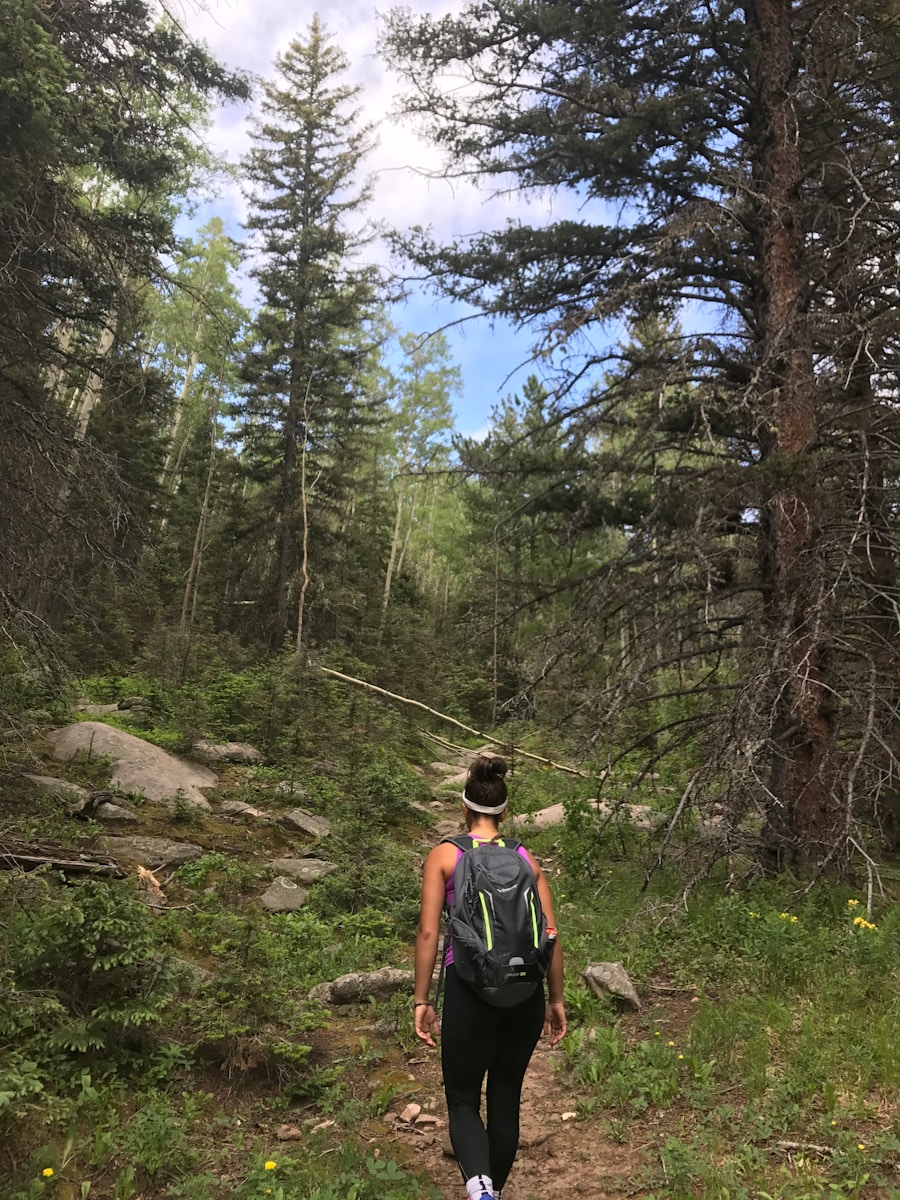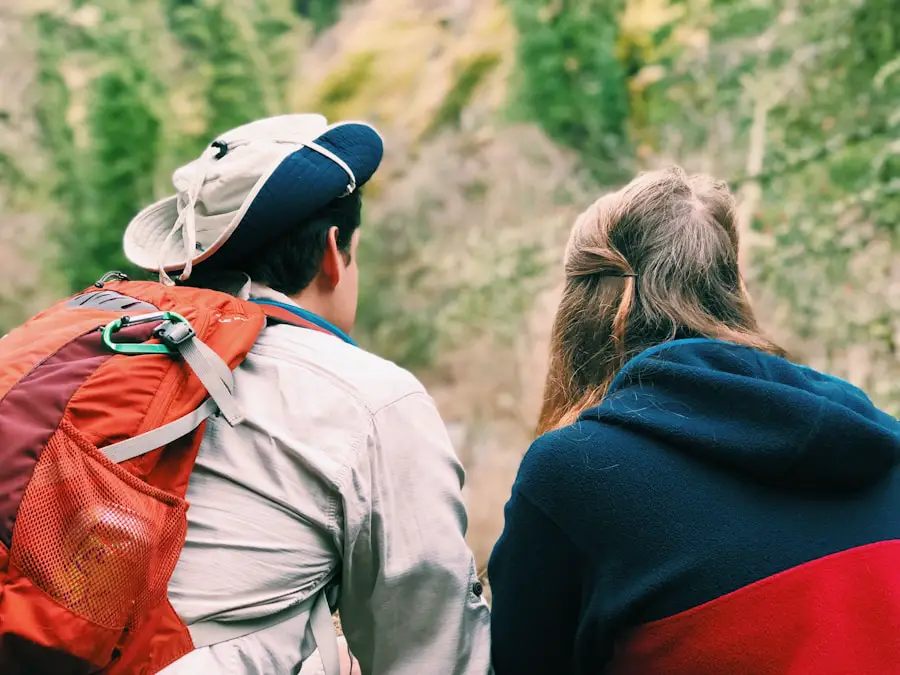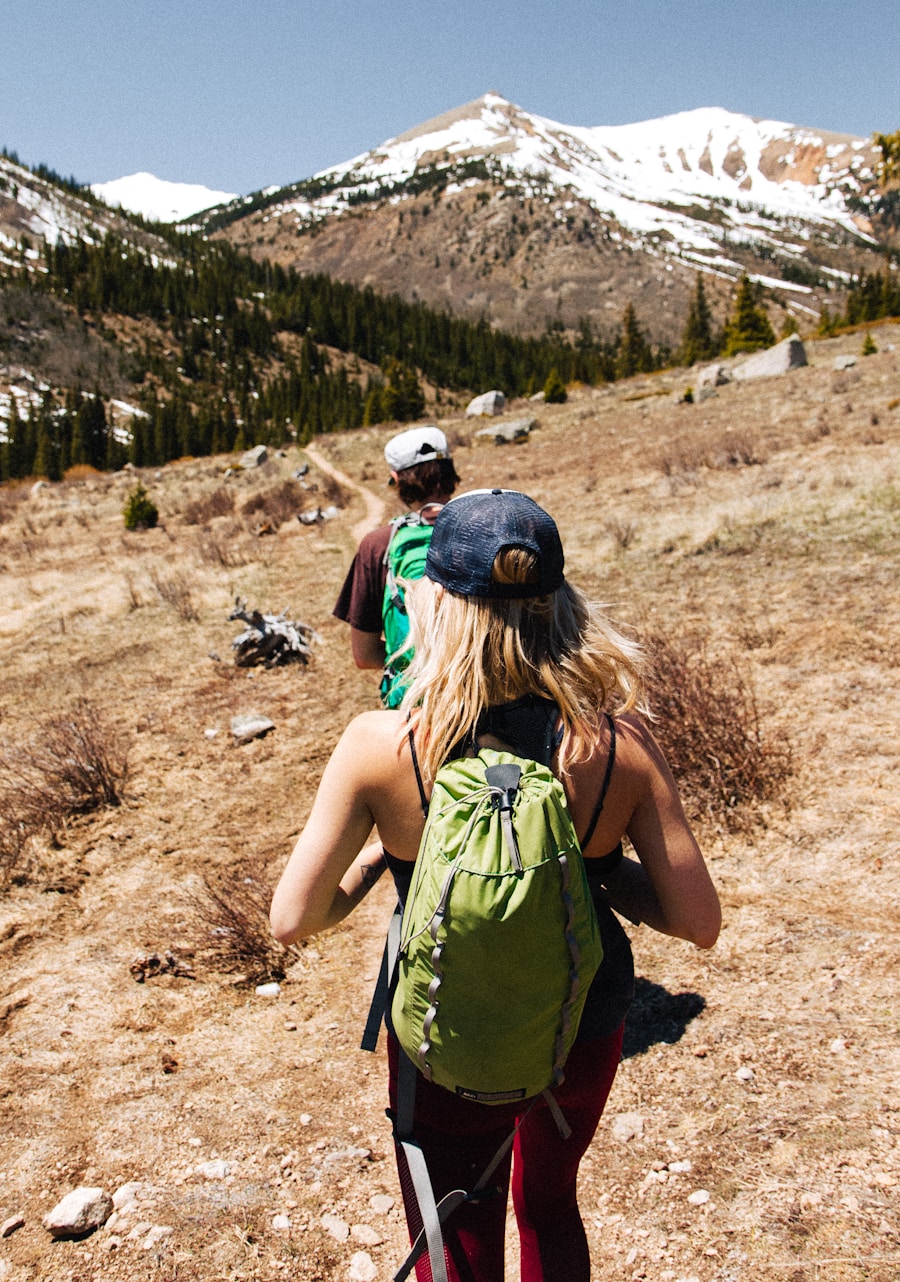An out and back hiking route is a specific type of trail that leads hikers away from a starting point to a designated destination and then returns them to the original point. This format is characterized by its straightforward nature, where the same path is retraced on the return journey. Out and back routes can vary significantly in length, difficulty, and terrain, making them suitable for a wide range of hikers, from beginners to seasoned adventurers.
The simplicity of this route type allows hikers to focus on the experience of the hike itself, rather than navigating complex loops or junctions. The appeal of out and back routes lies in their predictability. Hikers can easily gauge their progress by monitoring the distance traveled, which can be particularly beneficial for those who may be less experienced or unfamiliar with the area.
Additionally, these routes often provide opportunities to enjoy scenic views and natural features along the way, as hikers can appreciate the same landscape from different perspectives during both the outbound and return segments of their journey. This dual experience can enhance the overall enjoyment of the hike, as familiar sights may take on new significance when viewed from a different angle.
Key Takeaways
- An out and back hiking route is a trail that starts and ends at the same point, making it a round trip.
- Pros of out and back hiking routes include simplicity, familiarity, and the ability to turn back at any point, while cons include potential monotony and lack of variety.
- Planning and preparation for an out and back hiking route should include researching the trail, checking the weather, packing essentials, and informing someone of your plans.
- Navigation and safety tips for out and back hiking routes include bringing a map and compass, staying on the trail, being aware of your surroundings, and carrying essential safety gear.
- Benefits of out and back hiking routes include the opportunity to explore new areas, the ability to challenge oneself, and the convenience of returning to the starting point.
Pros and Cons of Out and Back Hiking Routes
Out and back hiking routes come with a variety of advantages that make them appealing to many outdoor enthusiasts. One of the primary benefits is the ease of navigation. Since hikers follow the same path in both directions, there is less risk of getting lost or straying off course.
This straightforward navigation can be particularly advantageous in areas where trail markers are sparse or where the terrain is challenging. Furthermore, out and back routes often allow hikers to experience a diverse range of landscapes within a single hike, as they can observe how the scenery changes with different lighting conditions or weather patterns throughout their journey. However, there are also some drawbacks to consider when choosing an out and back route.
One notable disadvantage is the potential for monotony. Since hikers traverse the same path twice, some may find that the return journey lacks the excitement of discovery that comes with exploring new terrain. This can be particularly true on longer hikes where fatigue sets in, making the return leg feel more tedious than the initial ascent.
Additionally, out and back routes may not offer as much variety in terms of elevation changes or trail conditions compared to loop trails, which can lead to a less dynamic hiking experience.
Planning and Preparation for an Out and Back Hiking Route

Effective planning is crucial for a successful out and back hiking experience. Before embarking on a hike, it is essential to research the chosen trail thoroughly. This includes understanding the distance, elevation gain, estimated time required for completion, and any potential hazards along the way.
Many hiking websites and apps provide detailed information about trails, including user reviews and photos that can help in assessing whether a particular route aligns with one’s skill level and physical condition. In addition to researching the trail itself, hikers should also prepare adequately in terms of gear and supplies. Essential items include appropriate footwear, weather-appropriate clothing, sufficient water, snacks, and navigation tools such as maps or GPS devices.
It is also wise to inform someone about your hiking plans, including your expected return time, especially if you are venturing into remote areas. This precaution ensures that someone will be aware if you encounter difficulties or do not return as planned.
Navigation and Safety Tips for Out and Back Hiking Routes
| Navigation and Safety Tips for Out and Back Hiking Routes |
|---|
| 1. Plan your route and inform someone of your plans |
| 2. Carry a map and compass or GPS device |
| 3. Check the weather forecast before heading out |
| 4. Stay on marked trails and follow trail markers |
| 5. Bring plenty of water and snacks |
| 6. Wear appropriate footwear and clothing |
| 7. Be aware of wildlife and potential hazards |
| 8. Pace yourself and take breaks as needed |
| 9. Carry a first aid kit and emergency supplies |
| 10. Turn back if you encounter unsafe conditions |
While out and back routes are generally easier to navigate than other trail types, it is still important to remain vigilant about navigation and safety throughout the hike. One effective strategy is to take note of landmarks or distinctive features along the way during the outbound journey. This practice can help hikers recognize their surroundings on the return trip, making it easier to retrace their steps accurately.
Additionally, using a GPS device or smartphone app can provide real-time tracking and help ensure that hikers stay on course. Safety should always be a top priority when hiking. Hikers should be aware of their physical limits and know when to turn back if conditions become unfavorable or if they are running out of time.
Weather changes can occur rapidly in many outdoor environments, so it is essential to check forecasts before heading out and to be prepared for sudden shifts in temperature or precipitation. Carrying a basic first aid kit can also be beneficial in case of minor injuries or emergencies during the hike.
Benefits of Out and Back Hiking Routes
Out and back hiking routes offer numerous benefits that cater to various preferences and skill levels among hikers. One significant advantage is accessibility; many out and back trails are located near urban areas or popular parks, making them easy to reach for day hikes. This accessibility allows individuals with limited time or resources to enjoy nature without committing to longer excursions that may require overnight gear or extensive travel.
Moreover, these routes often provide opportunities for social interaction among hikers. Since many out and back trails are popular destinations, it is common to encounter fellow outdoor enthusiasts along the way. This social aspect can enhance the hiking experience by fostering camaraderie and shared enjoyment of nature.
Additionally, out and back routes can serve as excellent training grounds for those preparing for more challenging hikes or backpacking trips, allowing them to build endurance while enjoying a manageable distance.
Common Mistakes to Avoid on Out and Back Hiking Routes

Despite their straightforward nature, there are several common mistakes that hikers should strive to avoid when tackling out and back routes. One frequent error is underestimating the difficulty of the trail based on its appearance during the outbound journey. Hikers may feel energized at the beginning but could struggle on the return leg due to fatigue or changing conditions.
It is crucial to pace oneself appropriately throughout the hike and to remain mindful of energy levels as one approaches the halfway point. Another common mistake is neglecting to carry sufficient supplies for both legs of the hike. Hikers may pack enough water and snacks for the outbound journey but fail to account for their needs on the return trip.
It is essential to plan for hydration and nutrition throughout the entire hike rather than just focusing on reaching the destination. Additionally, some hikers may forget to account for time spent at scenic viewpoints or resting spots along the way, which can lead to rushed returns if they have not planned accordingly.
Best Practices for Leave No Trace on Out and Back Hiking Routes
Practicing Leave No Trace principles is vital for preserving natural environments while enjoying outdoor activities like hiking. When following an out and back route, hikers should adhere to these principles by staying on designated trails to minimize impact on surrounding vegetation and wildlife habitats. Straying off established paths can lead to soil erosion and damage delicate ecosystems, so it is essential to respect trail boundaries.
Another important aspect of Leave No Trace is waste management. Hikers should carry out all trash, including food scraps and biodegradable materials, as these can disrupt local wildlife and contribute to pollution in natural areas. Additionally, using established restroom facilities when available or following proper disposal methods for human waste is crucial for maintaining cleanliness in outdoor spaces.
By following these best practices, hikers can help ensure that trails remain pristine for future generations.
Exploring Out and Back Hiking Routes around the World
Out and back hiking routes can be found in diverse landscapes across the globe, each offering unique experiences for adventurers seeking connection with nature. In North America, trails like the Bright Angel Trail in Grand Canyon National Park provide breathtaking views as hikers descend into one of the world’s most iconic natural wonders before retracing their steps back up. The trail’s well-maintained path allows hikers of varying skill levels to experience this majestic landscape while enjoying a manageable distance.
In Europe, routes such as the Cinque Terre coastal trail in Italy offer stunning vistas of colorful villages perched on cliffs overlooking the Mediterranean Sea. Hikers can enjoy both the outbound journey through terraced vineyards and olive groves as well as the return trip along this picturesque coastline. Similarly, in New Zealand’s Fiordland National Park, trails like the Routeburn Track provide opportunities for out and back hikes through lush rainforests and alongside pristine lakes with breathtaking mountain backdrops.
These examples illustrate just a fraction of what out and back hiking routes have to offer around the world. Each trail presents its own set of challenges and rewards, allowing hikers to immerse themselves in diverse ecosystems while enjoying the simplicity of retracing their steps on familiar paths. Whether seeking solitude in nature or connecting with fellow adventurers, out and back routes remain a popular choice for those looking to explore the great outdoors.
If you’re planning a hiking trip and wondering what “out and back” means, you may also be interested in learning about the best travel pillows for long flights this spring. Check out this article on
